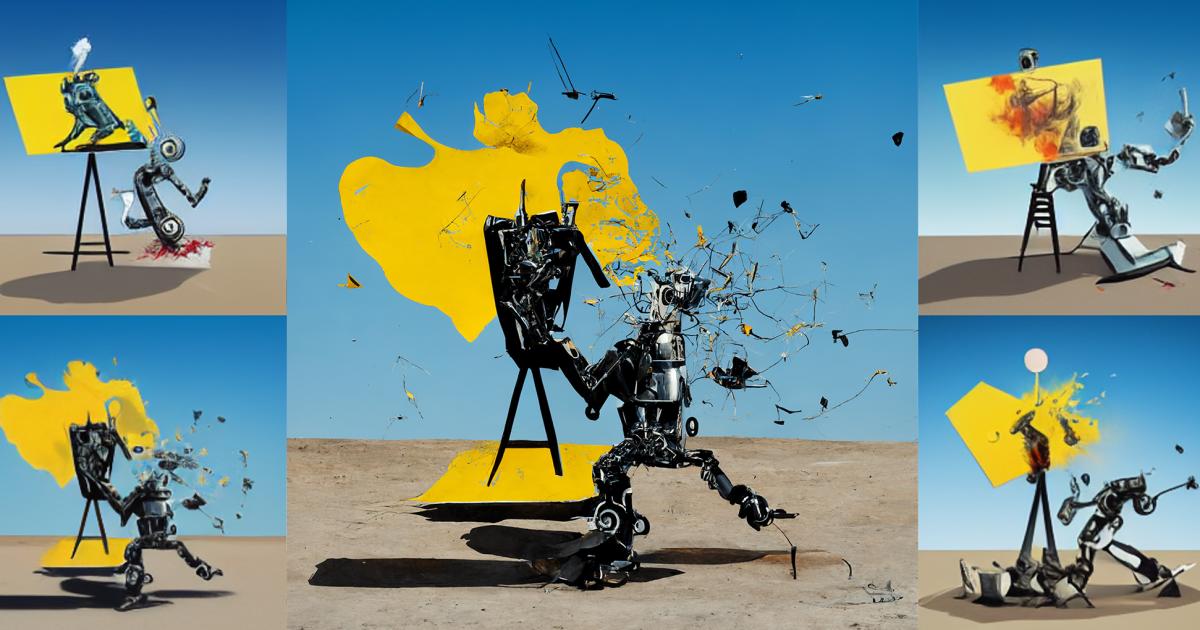
DALL-E and MidJourney: The Impact of AI on the Advertising Industry's Workforce
By Adedayo Oyetoke, Published on: June 1st 2023 4 min, 652 word Views: 1132
The advertising industry is undergoing a significant transformation as AI-driven tools like DALL-E and MidJourney are changing the way businesses create and distribute marketing content. While AI-driven tools offer many benefits, including increased efficiency, cost-effectiveness, and personalization, they also raise important questions about the impact on the advertising industry's workforce. In this blog post, we will explore the impact of AI on the advertising industry's workforce and how businesses can adapt to these changes.
The Benefits of AI-Driven Advertising
AI-driven advertising offers several benefits over traditional approaches, including:
1. Efficiency: AI algorithms can generate advertising content quickly and efficiently, reducing the time and resources required for traditional advertising.
2. Cost-effectiveness: AI-driven advertising can be more cost-effective than traditional approaches, as it requires less human labor and expertise.
3. Personalization: AI algorithms can be trained to generate personalized advertising content that is tailored to individual customers, allowing businesses to provide a more personalized and engaging experience.
4. Consistency: AI-driven advertising can help ensure consistency across different marketing channels and touchpoints, helping businesses establish a strong and recognizable brand image.
The Impact on the Advertising Industry's Workforce
While AI-driven advertising presents exciting opportunities for businesses, it also raises important questions about the impact on the advertising industry's workforce. For example, the use of AI algorithms in advertising may lead to job displacement for some workers, particularly those in creative roles like copywriting and graphic design. Additionally, the use of AI-driven advertising may require new skills and expertise, leading to a need for retraining and upskilling.
Adapting to Change
To adapt to the changes brought about by AI-driven advertising, businesses can take several steps, including:
1. Emphasizing creativity: While AI algorithms can generate advertising content quickly and efficiently, they may not be able to match the creativity and originality of human workers. Emphasizing creativity and originality can help businesses differentiate themselves and establish a unique and recognizable brand image.
2. Upskilling and retraining: Businesses can invest in upskilling and retraining their workforce to develop new skills and expertise that are optimized for AI-driven advertising.
3. Collaboration: Collaboration between human workers and AI algorithms can help businesses leverage the strengths of both, allowing for greater efficiency, personalization, and creativity.
4. Ethical and responsible practices: The use of AI algorithms in advertising raises important ethical questions about the role of human creativity and the potential for AI to perpetuate biases and stereotypes. Encouraging ethical and responsible practices can help ensure that AI-driven advertising is used in a way that is fair, inclusive, and respectful.
To further promote the use of AI-driven advertising while minimizing the impact on the advertising industry's workforce, here are some additional steps that can be taken:
1. Foster collaboration: Collaboration between human workers and AI algorithms can help businesses leverage the strengths of both, allowing for greater efficiency, personalization, and creativity. Encouraging collaboration can help ensure that AI-driven advertising is used in a way that is fair, inclusive, and respectful.
2. Encourage ethical and responsible practices: The use of AI algorithms in advertising raises important ethical questions about the role of human creativity and the potential for AI to perpetuate biases and stereotypes. Encouraging ethical and responsible practices can help ensure that AI-driven advertising is used in a way that is fair, inclusive, and respectful.
3. Develop new AI algorithms: AI algorithms can be developed and refined to optimize them for advertising, allowing for greater personalization, efficiency, and creativity.
4. Monitor and assess impact: Regular monitoring and assessment of the impact of AI-driven advertising on the advertising industry's workforce can help ensure that it is being used in a way that is sustainable, ethical, and effective.
In conclusion, the impact of AI on the advertising industry's workforce is significant, but businesses can adapt to these changes by emphasizing creativity, upskilling and retraining, collaboration, and ethical and responsible practices. By fostering collaboration, encouraging ethical and responsible practices, developing new AI algorithms, and monitoring impact, we can work towards a more innovative and sustainable future for the advertising industry's workforce.
